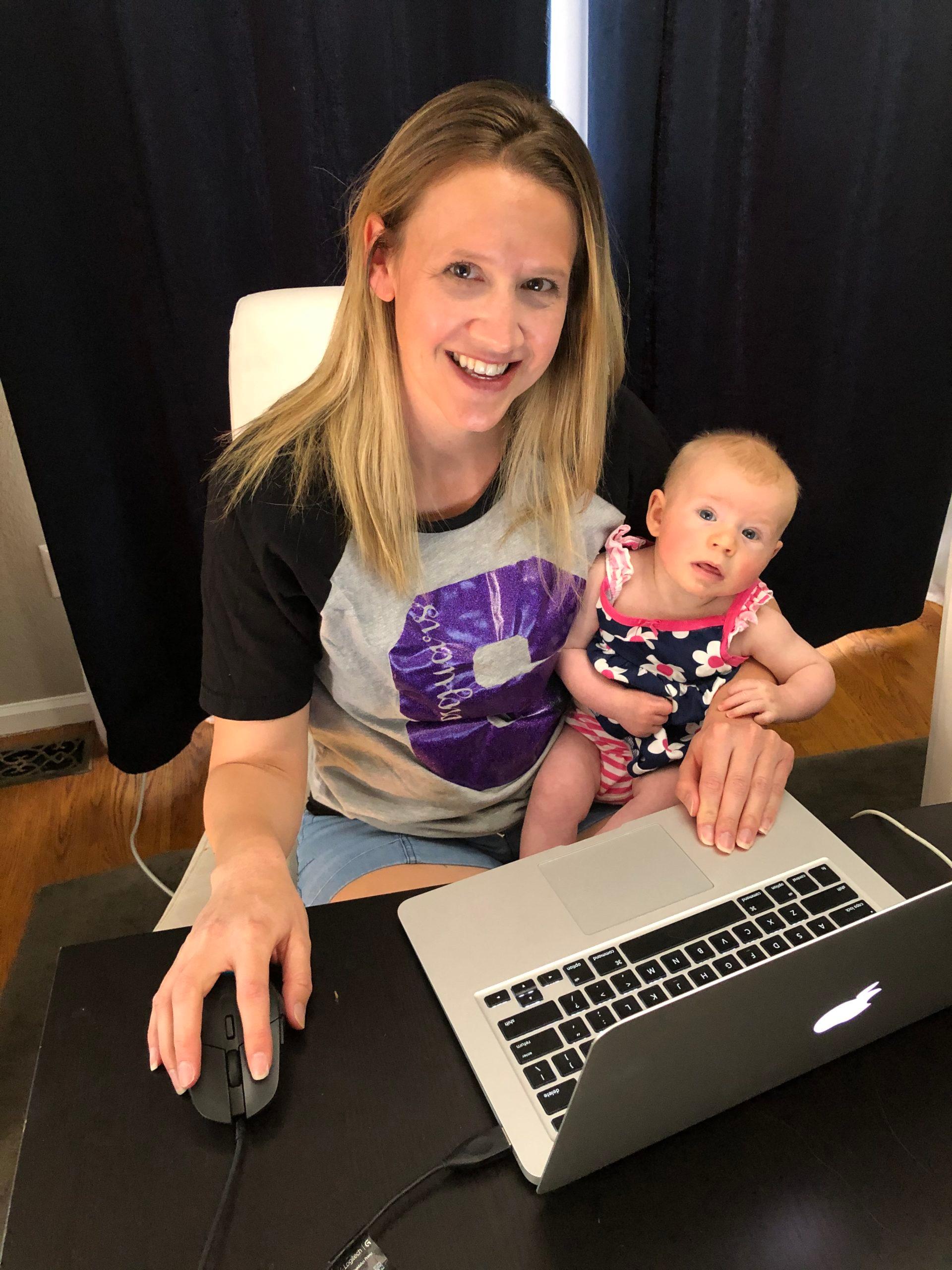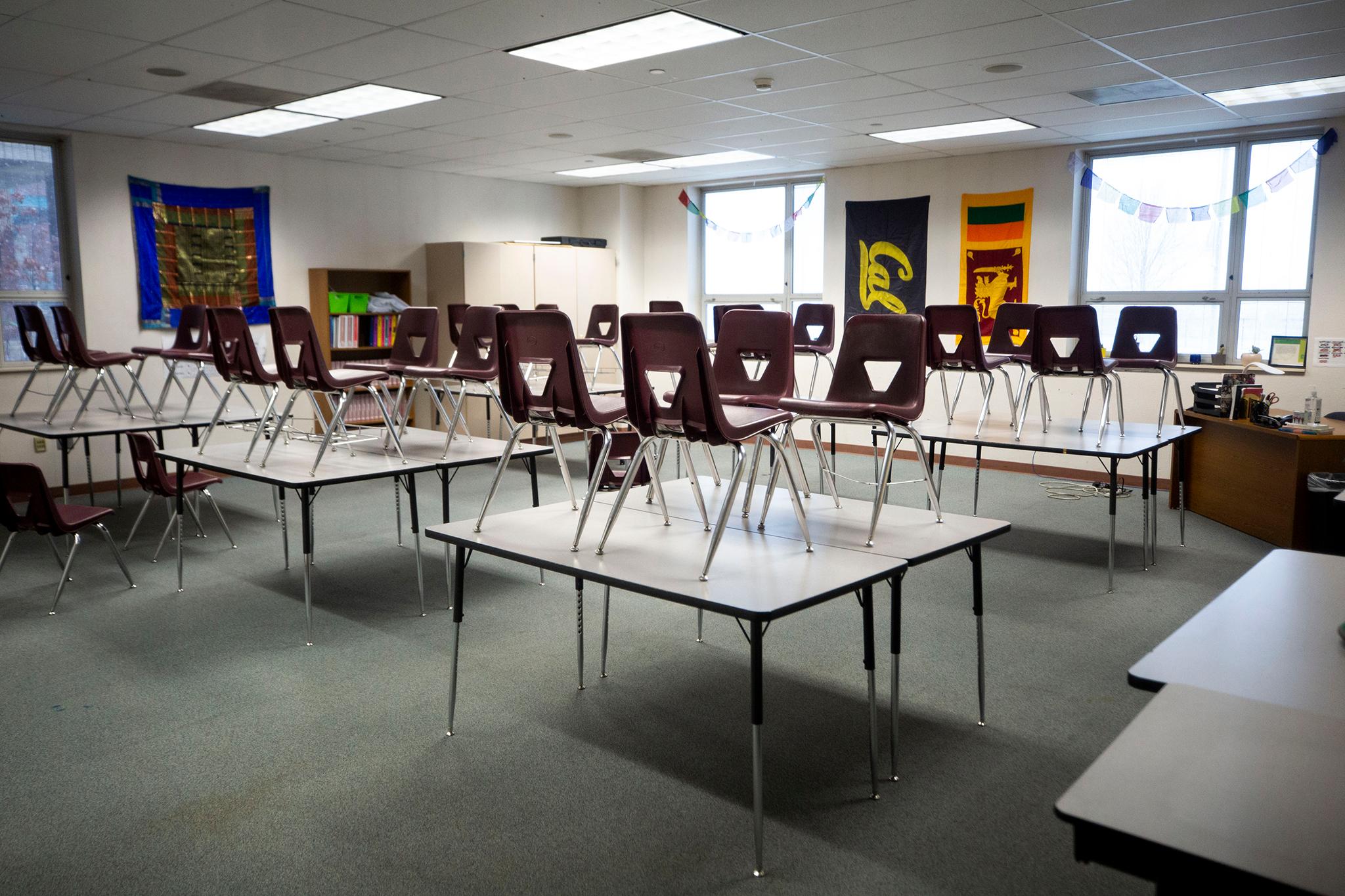Jessica Erickson no longer has a stick of chalk or a Sharpie in her hand when she teaches.
Instead, she’s cradling her 3-month-old baby girl.
The day Erickson was to return to her third grade classroom at Denver’s Smith Elementary, she got a surprise. Denver Public Schools announced it was closing all schools in an attempt to stem the spread of the novel coronavirus.
But on Tuesday, Erickson was back in action, baby in her arms, doing a live Google video session with her students.
For the district’s 92,000 students, Tuesday was the first day of remote learning after a three-week break. Erickson said her staff at Smith Elementary has been communicating about the plan of action for today and the rest of the school year since the school closures were announced.
At 8:05 a.m. Tuesday, ten students of her students logged in for a live morning meeting. Her house is tiny, Erickson said, so she did that meeting in her combined kitchen/dining/living room.
“It was definitely a terrifying experience, but my teammate and I decided we would do it together, we would rip the band aid off right away. because that’s the only way to learn right now,” she said.

As the day went on, more students logged on until just about each one had made contact with the teachers. Erickson and her colleague posted a pre-recorded literacy and math lesson on line. (Erickson records those at a card table in her daughter’s nursery, which is also where her husband works.)
Students completed the assignments online. Erickson and her teammate plan a lot of new content in literacy, but math will be mostly a review of multiplication, division and fractions — big third grade milestones.
More than 90 percent of Smith Elementary students qualify for federal free and reduced priced lunch. Erickson says about half of the school’s students registered for a school-issued computer, but in her class, there didn’t seem to be any connectivity problems on Tuesday.
Since Monday, Erickson said it’s been “nonstop” with questions from parents about getting their children logged on and registered. Parents communicate on a messenger app called ParentSquare that doesn’t reveal cell phone numbers.
“It’s actually really just been a positive experience,” Erickson said. “I’m sure hair-pulling for some of the parents and myself at times, but overall it’s really been surprisingly positive.”
Students can choose their own deadlines for assignments, so throughout the day Erickson would hear her computer ping as students completed assignments or asked questions.
“I see that they’re commenting on each other’s work,” she said. “They’re being really involved. It sounds like they missed each other a lot and they’re taking this as an opportunity to communicate.”
As she responded to students, Erickson, who also has a 3-year-old son, had other tasks, such as changing diapers, breastfeeding, pumping milk, preparing meals and snacks, “dealing with the constant getting into things (my son) shouldn’t,” playing outside, learning how to ride a bike (“we’ve put his training wheels in shoes so he can stationary bike on the porch”) while she works on the porch. Her son started his own remote learning Tuesday.
Smith Elementary staffers are meeting the emotional needs of their students, too.
School staff work to build relationships with students, attending to their social and emotional issues. Erickson is planning to try to do that online. On Tuesday, she and her teammate talked to students about what they learned while they weren’t in the classroom, like sports.
Between 3:30 and 4 p.m. Erickson was ready to check in with her students again for daily live office hours, just to say hi or help with assignments.
“I’ve been getting a lot of comments in Google Classroom that they miss their classmates, they miss school, they miss us, how are we doing, asking about everybody. I had one kid who said he’s really enjoying staying at home but he had a lot of emoji winking faces as well.”
Erickson knows there will be bumps in the road and curve balls.
Like on Monday during a school staff meeting, Erickson’s 3-year-old decided to change his clothes “so in the background [of the video meeting] he took off all his clothes, ran around for a minute and then went upstairs. You never know what’s going to happen.”
But it’s all part of the learning curve. Erickson is looking forward to becoming adept at remote learning.
“It’s actually kind of exciting to try something new. I’ve been a classroom teacher for eight years, so this is a fun opportunity to relearn and fall in love with teaching in a different way.”
Denver Public Schools’ remote learning guide outlines three options for teacher-led instruction.
Teachers may use district-created online modules or work packets and host office hours by phone or through technology. Some teachers may post their own learning plans through an online platform like Schoology and share them with students on a daily or weekly basis, letting students “self-pace.” Still other teachers may attempt to create online courses, where students participate in a class on a regular schedule and can interact with the teacher live.
“Everyone will have to manage this differently,” said DPS board member Jennifer Bacon.
Bacon said she’s heard from some students who not only have to manage school but are taking care of younger siblings because parents are working.
“We realize we could do so much more if we had all the resources available, and we’re working really hard to be able to support all of our students and their learning needs,” she said.













